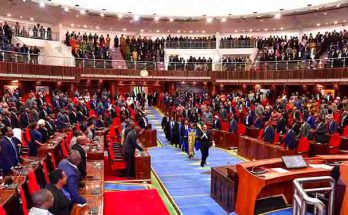 A new report by the oil pricing group, Platts indicates that the crude oil production increases in Nigeria, Libya, and Saudi Arabia have pushed output by the Organisation of Petroleum Exporting Countries (OPEC) up by 220,000 barrels per day and more than offset production drop in Venezuela.
A new report by the oil pricing group, Platts indicates that the crude oil production increases in Nigeria, Libya, and Saudi Arabia have pushed output by the Organisation of Petroleum Exporting Countries (OPEC) up by 220,000 barrels per day and more than offset production drop in Venezuela.
The latest S & P Global Platts survey released at the weekend showed that OPEC’s crude output has risen by 500,000 bpd in the last two months, as the continued recoveries of Nigeria and Libya pushed the cartel’s output to 32.49 million b/d.
The June output figure, an increase of 220,000 bpd from May, is a six-month high for the organisation, complicating its efforts to hasten the oil market’s rebalancing through production cuts that went into force January 1, according to Platts.
The report noted that the production rises in Libya and Nigeria, which were exempted from the agreement as they recovered from militancy, have sent the cartel’s collective output almost 600,000 b/d above its stated ceiling of around 31.9 million b/d when new member, Equatorial Guinea, is added in and suspended member Indonesia is subtracted.
Libya’s production, boosted by the return of several fields that had been shut in by civil strife, rose 80,000 b/d on the month to average 810,000 b/d, its highest level since October 2014, when output averaged at 860,000 b/d, according to Platts survey data.
The report showed that Nigeria’s output, meanwhile, rose 50,000 bpd to 1.78 million bpd, the highest since January 2016, as key export grade Forcados returned from force majeure, more than offsetting the force majeure declared June 8 on Bonny Light exports, as well as unplanned maintenance on the Bonga field.
Further recoveries appear likely, as militancy has quieted in both countries for the moment, the report added.
The combined output of Libya and Nigeria is now about 380,000 b/d above their October level, the benchmark month from which OPEC based its 1.2 million b/d cut in its output agreement.
This comes even as compliance among OPEC’s 12 countries with quotas under the agreement remains robust at 116 per cent, according to an average of January through June production, as seven countries led by largest member Saudi Arabia have cut more than required.
Platts also noted that Saudi Arabia saw its output rise in the month to 9.97 million b/d, according to the survey, as the kingdom’s crude exports rose significantly and the onset of summer drove domestic consumption of oil to power air conditioning.
But that is still far below its quota under the deal of 10.06 million b/d.
Second largest member Iraq grew production slightly to 4.45 million b/d, remaining the least compliant country in terms of output above its quota, which is 4.35 million b/d.
Iran, OPEC’s third largest producer, also saw a slight increase in output to 3.8 million b/d, right at its quota under the deal, according to Platts.
Venezuela saw the largest decrease in the month, with production falling 30,000 b/d to 1.91 million b/d, the survey found, as the country’s economic crisis continued to worsen, with various refinery units and heavy crude upgraders being shut down and extra heavy crude production being shut in.
New member Equatorial Guinea produced 140,000 b/d in June, down from 150,000 b/d in May, according to the survey.
Diplomatically isolated Qatar, meanwhile, has yet to see any impact to production from the economic blockade imposed by Persian Gulf neighbors Saudi Arabia, the UAE, Bahrain and Oman, with output remaining steady at 610,000 b/d.



